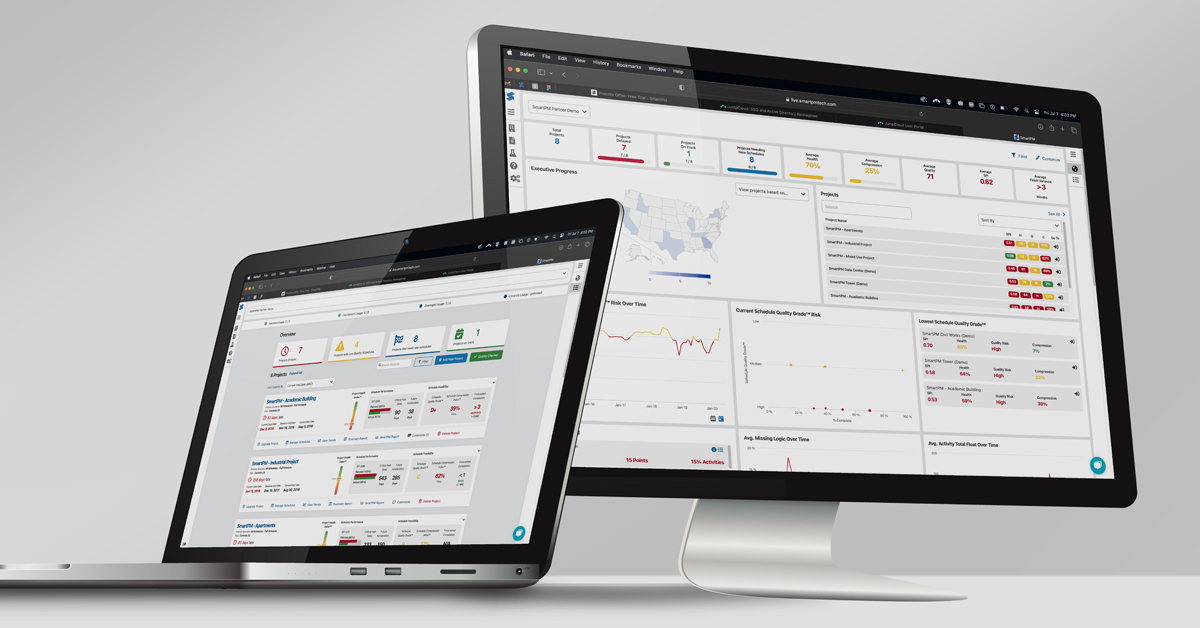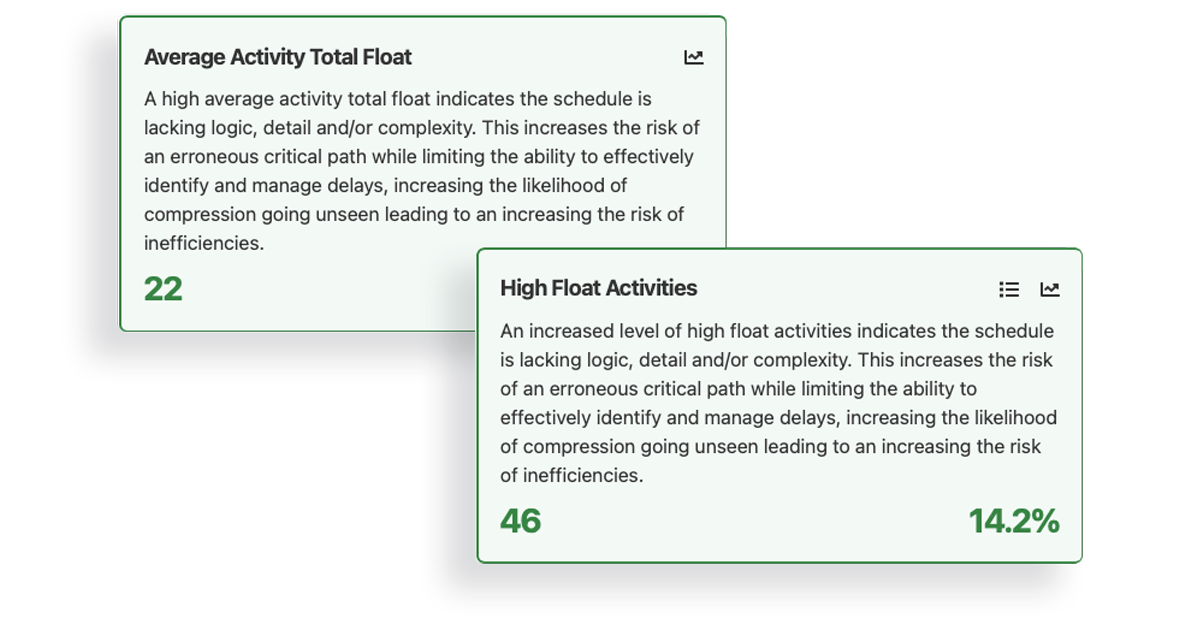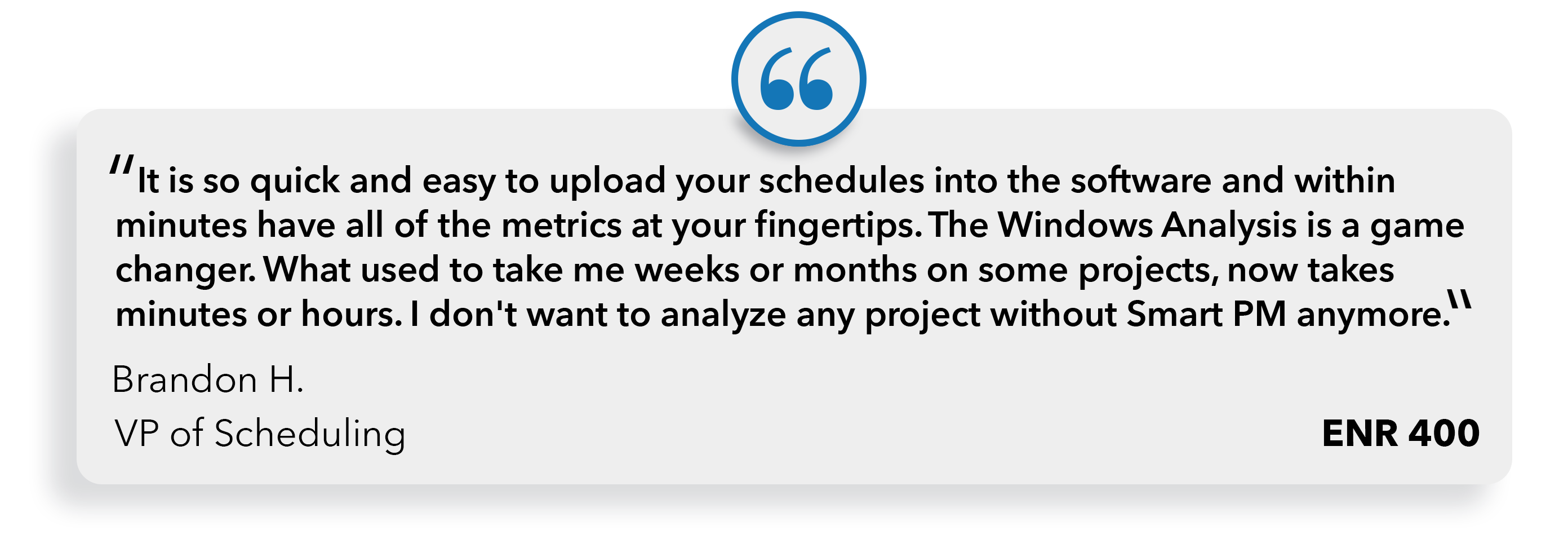Making sense of all of your data from all of your projects can feel like trying to understand a foreign language. But, when we break it down into steps, it starts to make a lot more sense.

- News
Creating a Data-Driven Mindset in Construction
In the ever-changing environment of commercial construction, it can be hard to effectively manage projects due to their dynamic nature. The fragmented nature of the industry, combined with disconnected systems that store project information separately, further complicates creating a data-driven mindset in construction.
As a result, high-level decision-makers often struggle with making fully informed project assessments when correlating the interactions between their projects and other processes, especially when involving project schedule data in those assessments.
Yet, traditional Critical Path Method (CPM) schedules play a crucial role in driving time, cost, and other associated factors in commercial construction projects. For that reason, at the project level, there is a considerable amount of time spent developing and updating schedules to hold everyone accountable. However, practical reality dictates that utilizing the CPM method alone falls short of meeting the needs of decision-makers.
“75% of all commercial construction projects are delayed and/or over budget due to mismanagement of construction schedules.”
To bridge this gap, data analysis and machine learning can provide the missing link to augment CPM scheduling, enabling more informed decision-making.
The Value of Data-Driven Decisions
Every construction project is expected to deliver upon pre-defined Key Performance Indicators (KPIs), almost always including timelines, budgets, quality, and safety. To do so, project teams need a centralized source of project information that enables effective, data-driven decision-making.
Making informed decisions is crucial. And what better way to make those decisions than by leveraging the power of data? Accessing real-time information allows for timely adjustments throughout the project lifecycle–providing value by disseminating accurate data to all parties involved.
With a data-driven mindset, you’ll have a solid foundation on which to base your decisions. Say goodbye to relying on vague assumptions or guesswork and welcome concrete evidence to support your choices, making you more effective and competitive.
Creating a Data-Driven Mindset in Construction
How can you create a data-driven mindset in your organization? Here are a few simple steps to get you started:
1. Embrace the Power of Data
Start by recognizing the value that data brings to the table. Understand that data, specifically schedule data, is not just a bunch of numbers and logic ties. It’s a gold mine of insights waiting to be discovered.

For instance, if your project employed automated schedule analytics, you catch small issues before they snowballed into huge problems–empowering you to know your risk in real time.
2. Collect the Right Data
Determine what data points are important for your projects.
To me, schedule data can predict and precede any issues that arise on a project. From there, you can identify key performance indicators (KPIs) pulled from schedule data and set up systems and processes to collect accurate, relevant data.
There are a number of quality metrics to focus on to see where you have the biggest potential risk issues, such as:
- Schedule Quality
- Missing Logic
- Constraints
- Baseline lag
- Finish-to-Start Relationships
- Finish-to-Finish Relationships
- Float
3. Analyze and Interpret
Collecting data is only the first step. You need to analyze and interpret the data to extract meaningful insights. Utilizing powerful analytical tools like SmartPM can uncover patterns, trends, and outliers by using technology to streamline efficiency. Then, you can dive deeper into the story the data tells and derive actionable insights.

For example, if your schedule contained high amounts of float, the schedule is prone to missing logic, lack of crew logic, and compression. The story might be that the site team believes they are progressing on track. So, they continue using available float because of resource constraints. However, without tight logic, the project risks undetected delays and other challenges. Knowing this, you can move on to the next step.
4. Make Data-Driven Decisions
Armed with insights, it’s time to put them into action. You can now make informed decisions that align with your project goals and objectives. Use your gathered information to mitigate risks, optimize resource allocation, and drive efficiency.
So, let’s return to our scenario of high float indicating issues with missing logic. In my experience, if float is available, it is used. So, the decision I would make–if I found out my teams were consistently creating schedules with high float–would be to make sure everyone was educated on logic and understood the importance of full logic sequences. If your teams were able to create schedules without high float and with tight logic, you could then see the true critical path on the job–resulting in better outcomes because of a tighter schedule.
5. Learn and Iterate
A data-driven mindset in construction is all about continuous improvement. With automated analysis comes the gift of more available time. This is time you would typically spend hunting data down or trying to fix something that is irreparable.

Armed with data-driven analytics, take a moment to evaluate the outcomes of your decisions and learn from them. Then, identify areas for improvement and adjust your strategies accordingly. Remember, a crucial part of the data mindset means continuously refining your data collection and analysis processes. In doing so, you ensure they align with your evolving project needs.
6. Create a Data-Driven Culture
Lastly, to drive success and create a truly transformational impact, it is essential to have a data-driven culture within your organization. By embedding this mindset from the executive suite down to the project level, you cultivate an environment where trust is built and success is realized.
When people throughout the organization buy into the value of data and appreciate its significance, it becomes a driving force in decision-making processes. By fostering a data-driven culture, you lay the foundation for continuous improvement and growth, enabling your organization to excel in the construction industry.
Building a Foundation of Trust- One Data Point at a Time
By creating a data-driven mindset, you empower yourself and your team to make confident decisions backed by evidence and insights. Most importantly, the industry can begin to overcome the challenges posed by project dynamics, fragmented information systems, and the need for agile decision-making. You can build a foundation of trust and success in your construction endeavors – one data point at a time.
Are you ready to unlock the power of data in construction? Start your journey towards a data-driven mindset today and embrace the transformation it can bring to your projects by filling out the form below:
RELATED STORIES

Making Construction Data Analytics Easier to Understand
Making sense of all of your data from all of your projects can feel like trying to understand a foreign language. But, when we break it down into steps, it starts to make a lot more sense.

Overcoming Confirmation Bias in Construction Project Management
Confirmation bias can be particularly problematic in project and schedule management, where decisions must be based on accurate and comprehensive information.

Top Construction Scheduling Software in 2023
SmartPM’s recognition as a top construction scheduling software in 2023 attests to the immense value in automated project controls.

Putting the ‘Smart’ in Project Management with Project Controls
Project controls are not just a subset of project management; they are its backbone, focusing on meticulous monitoring and analysis.

